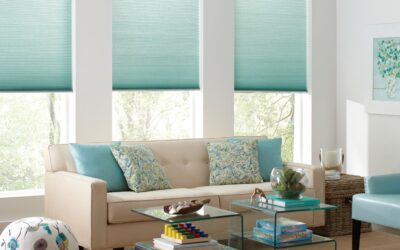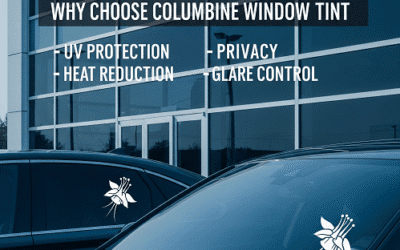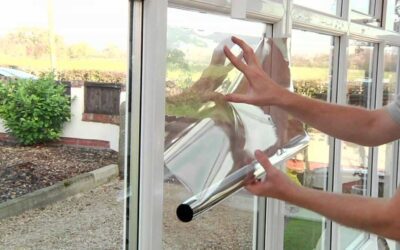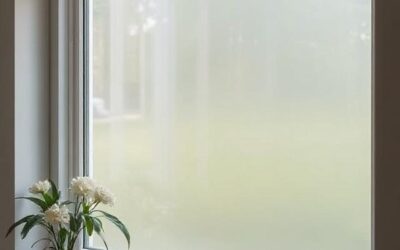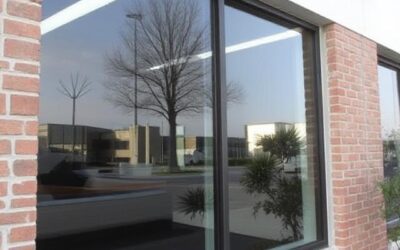Ultimate Guide for Advanced Window Tinting Techniques
When we are on a commercial window tinting project, customers will often stop and ask us questions about what we are doing. They ask about every part of the process, from what film we are installing to what it takes to clean the window and lay the window film so flat. An advanced window tint installer often makes it look so easy that customers want to install the film themselves. Sometimes, they want to know what to look for when hiring for office window tinting, or they may want to understand the process. In this guide on advanced window tinting, we wanted to quickly go through each step and answer some of the commonly asked questions.
Which Window Film to Use?
The first step in any commercial or residential window tinting project is to decide what film to use. For this, you need to identify what goal you are trying to achieve. If you want to reduce heat, glare, and fading, you will want to use a solar film; something that can reflect or absorb the sun’s heat while also blocking the damaging UV rays. If you wish for both daytime and nighttime privacy, you will need to look at a completely different set of films, going with a frost to give you privacy while still allowing a good amount of natural light. Another collection of window films can provide safety and security or create a more decorative look.

Considerations For Types of Glass And Window
Once you know your commercial window tinting project goals and have a good idea of the type of film to use, you must consider the glass type you have. Some films are not safe to be installed on certain types of glass, possibly causing the glass to break with the wrong film type.
With tempered or heat-strengthened glass, you are typically safe to use any advanced window film you would like. These stronger types of glass, created with a specific heating and cooling manufacturing process, allow the windows to absorb more heat without breaking.
Annealed glass is the most common type found in windows. You must take caution with which window film you install on this type of glass, as too much heat absorption can cause the glass to break. Double-pane windows with annealed glass have an increased potential for glass breakage due to heat absorption. As the name suggests, these windows have two sheets of glass designed to help reduce the amount of heat transferred into or out of your business or home. Window film is installed on the interior pane and will absorb and reflect heat into the window. The extra heat absorption with this type of window increases the potential for glass breakage. Using a film that reflects more heat and absorbs less is essential. An advanced window film manufacturer will approve films for this type of glass and provide a glass breakage warranty.
Laminated glass is another type of glass that you will find. This glass has a transparent film (PVB) manufactured into the middle, which causes the glass to absorb more heat than standard glass. Fewer films are safe to install on this type of glass, and you need to consult the window film manufacturers’ guidelines.
You can also decide which side of the glass to install the advanced window film. Installing film on the exterior side doesn’t last as long as film installed on the interior, but you can reduce the chance of glass breakage, or sometimes you may not have access to the interior side of the glass.
Finally, you want to ensure you use a reputable, advanced window film from a quality manufacturer. Manufacturers will provide warranties on film that an approved professional window tint company installs. Also, they will have the previously mentioned guidelines on which films are safe to install on which types of glass and windows.
Water Solution
We are asked most about our water solution during office window tinting installations. Customers want to know what it is, why we use it, whether it’s harmful, etc. The water solution used during window tinting installations is crucial because it allows us to move the film piece around on the window and squeegee the air bubbles out. This solution is not harmful and is usually just water with a small amount of soap to help give a slippery effect when moving films and squeegeeing them. The soap is most commonly a dishwashing soap, like Dawn, or baby shampoo. Sometimes a small amount of alcohol is used to help with the drying or curing. An advanced window tinting company will know how much soap to use with different film types or windows. Too much soap with a small window and less sticky window film will make it move around too much; a large window and film with a sticky adhesive will have the reverse issue.
A lot of water is required for commercial window tinting installations. Having towels ready to wipe up any excess water as it comes off the window is vital. Also, a good window tint company will put down blankets or towels to help keep the water from pooling too much.
Cleaning The Window
Cleaning the window is perhaps the most critical part of any office window tinting project. You must remove as much dirt and grime from the window to allow the window film to properly adhere and keep from seeing a lot of debris trapped under the film. First, you must use a razor blade or special scrub pad to loosen any dirt up. The razor blade must be a stainless-steel version to prevent scratching the glass. For certain types of glass, usually some tempered, the scrub pad must be used as blades are not safe to use. Finally, all edges must be wiped clean and glass squeegeed to get any remaining debris off the window.
Precut And Install The Material
Next, an advanced window tinter will precut the window film, so it is close to the size of the window. If the film is much larger than the window, it can be challenging to get a quality installation. During installation, a thin clear release liner gets removed to expose the film adhesive. The same soap and water solution gets sprayed on the film and the window. An advanced window tint installer has techniques for large windows to help roll the material onto the window, allowing them more control for a clean installation.
Squeegee And Final Cutting
The last step an advanced window film installer will take is to use their special squeegees to remove as much water as possible between the window film and the glass. As they get close to the edge of the window, they need to do a final cut of the film so it can lay flat and seal. Usually, the installer will use a cutting blade, separated by a thin card from the frame, to leave a tiny, little noticeable, 1/8″ inch gap between the frame and the cut line of the film. This slight gap allows for that proper seal. Here it is again important to use a stainless-steel blade to keep from cutting the glass.
Conclusion
These steps can seem daunting for a professional, quality window film installation. While it is possible to install window film yourself, we often find customers that struggle, leaving them with undesirable results. Now that you know some of the advanced window tinting techniques, it may be best to consult a company and leave the installation to an advanced window tinting company with practiced and trained installers, giving you the best results possible. You can easily find a quality company by searching for “business window tinting near me” online.
Get in touch with Columbine Window Tinting for more details.
